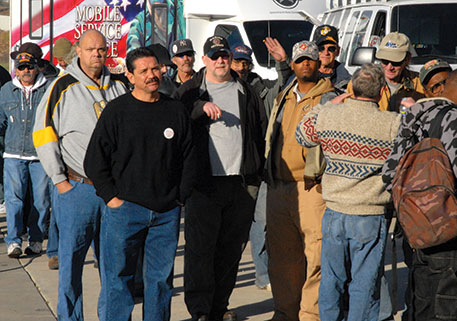 DAV responds to Army veteran in social networking group after VA proposes slash to benefits
DAV responds to Army veteran in social networking group after VA proposes slash to benefits
Ben Engel was shocked when he opened a letter from the Department of Veterans Affairs proposing to slash his benefits severely. Confused, rattled and a bit worried about the financial future, he turned to an unlikely place for reassurance: the internet.
“It looked like a potentially life-changing letter,” said Engel, who served 13 years between the active-duty Army, Army Reserve and National Guard as a multichannel transmission systems operator. “This was completely out of the blue.”
He had deployed to the Iraq-Kuwait border in 2003 and Afghanistan in 2011, where he sustained injuries from an improvised explosive device.
The University of Central Oklahoma student was alarmed by the potential financial hardship that the looming cuts would put him in, so he posted to a private Facebook group, hoping to find answers. More than 1,800 miles away, DAV National Service Officer Andrew Wilkinson saw his query and knew he needed to help.
“Ben was understandably concerned because the VA is proposing to cut his benefits, but he’s not getting any better,” said Wilkinson, who works at the DAV national service office in Augusta, Maine.
Wilkinson explained to Engel why he got the letter and how DAV could help with his case. He connected Engel with Augusta National Service Office Supervisor Brandon McKinney, filed an appeal and set up a hearing.
When the VA grants service connection for a condition, they have to consider whether the condition is static or has the potential for improvement. If there is the possibility of improvement due to treatment, the VA will set up a future examination to reevaluate the condition to determine if improvement in the condition has been sustained. If so, the VA can propose to reduce the evaluation. The notification from the VA’s proposal to reduce their benefits provides the veteran 60 days to present any evidence for consideration before making the final decision.
By law, the VA cannot reduce a veteran’s rating if the veteran takes action by requesting a hearing within 30 days of the date of the VA’s letter proposing to reduce the benefits. McKinney said the fast action and due diligence on Engel and Wilkinson’s part ensures Engel could plead his case with the VA and have all evidence submitted for review before a final decision.
After speaking with McKinney and Wilkinson, Engel said he felt like a weight had been lifted.
“They knew the exact reason why someone would propose a rating reduction, and they gave me a lot of information,” he added.
“It would have been a sad story, because the veteran would have lost benefits and we would have to fight to get them back,” explained McKinney. “In this case, we can have a preemptive strike and go into the hearing with an educated battle plan.”
He added that when veterans receive these letters, they should call a local DAV office so they can submit the correct paperwork on time.
Engel is currently waiting on the VA to schedule his hearing, where he will have a chance to meet with VA officials to discuss his case.
While there can be a lot of misinformation on social media, for Wilkinson, crowdsourcing paid off.
“Veterans using social media to get information from other veterans in these groups shows that we’re there to support and help each other even after completing time in service,” he said. “If Ben has any issues whatsoever, he knows he can contact us for any answers.”
“There’s a lot of stuff on Facebook you have to take with a grain of salt,” added Engel. “But without social media, I probably would not have gone through DAV, or it would have taken me a lot longer.”




